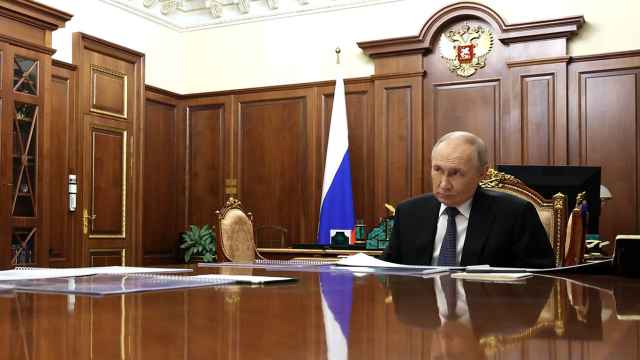Mazda plans to begin assembly of its cars in Primorye, the region's government announced, making it the first foreign car manufacturer to start a production facility after the crisis.
The deal was discussed at a meeting of Primorye Governor Sergei Darkin and a delegation from the Japanese company. Mazda will either build a new plant in the region or use existing production facilities and infrastructure, with primary capacity possibly reaching 30,000 automobiles, according to the announcement Friday.
A Mazda spokesman confirmed that talks with the governor had taken place, but declined further comment. In December 2010, Mazda president Takashi Yamanouchi said his company plans to examine the possibility of building new factories in developing countries, including Russia.
Mazda has not officially informed its dealers about local manufacturing, said Sergei Shcherbinin, executive director of retail at Rolf Group. But employees of two dealerships confirmed that they have heard about such plans.
The Far East is a logical choice because the lion's share of components will be supplied from nearby Japan. For the project to be economically feasible, it must be done using an industrial assembly regime that enables importing components at minimal rates, said Ivan Bonchev, head of Ernst & Young's automobile practice.
An Economic Development Ministry spokesman said Mazda has not asked to conclude an industrial assembly agreement. A separate agreement will not be required because Mazda can do assembly with Sollers, a government official said.
Sollers already has an industrial assembly agreement but has not negotiated with Mazda yet, an Economic Development official said. A Sollers spokesman said the company is not in discussions with Mazda.
Sollers opened a factory with an annual capacity of 25,000 automobiles in Vladivostok in late 2009. The plant assembles crossovers for the Korean firm SsangYong. This year it will operate at maximum capacity, but in 2013 capacity will go up to 40,000 vehicles per year, a Sollers spokesman said.
Last year, although the Russian market grew 30 percent, Mazda's sales in the country dropped 19 percent to 24,926 vehicles — in part due to the unfavorable yen-to-ruble exchange rate that made Mazda a very expensive brand, Shcherbinin said.
A brand's recognition, sales volume and quality image all depend on the volume of deliveries, Shcherbinin said. Mazda now feels confident on the market, but based only on imports, the company can expect modest growth at best, said Vladimir Grigoryev, of the Avtomir dealership. Domestic production will be a plus for the company because that will reduce currency risks, he said.
A Message from The Moscow Times:
Dear readers,
We are facing unprecedented challenges. Russia's Prosecutor General's Office has designated The Moscow Times as an "undesirable" organization, criminalizing our work and putting our staff at risk of prosecution. This follows our earlier unjust labeling as a "foreign agent."
These actions are direct attempts to silence independent journalism in Russia. The authorities claim our work "discredits the decisions of the Russian leadership." We see things differently: we strive to provide accurate, unbiased reporting on Russia.
We, the journalists of The Moscow Times, refuse to be silenced. But to continue our work, we need your help.
Your support, no matter how small, makes a world of difference. If you can, please support us monthly starting from just $2. It's quick to set up, and every contribution makes a significant impact.
By supporting The Moscow Times, you're defending open, independent journalism in the face of repression. Thank you for standing with us.
Remind me later.





